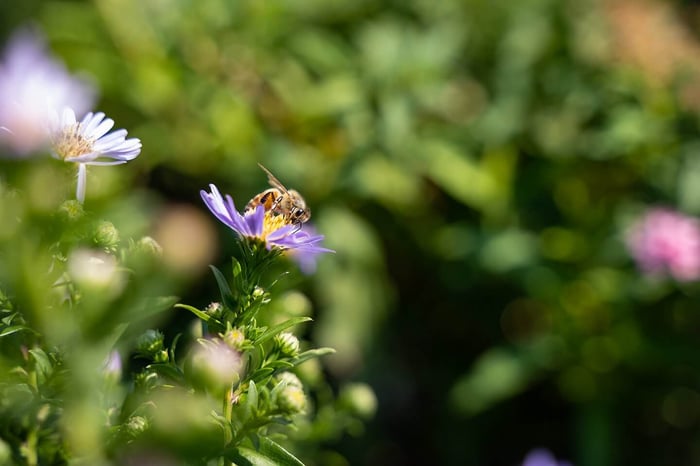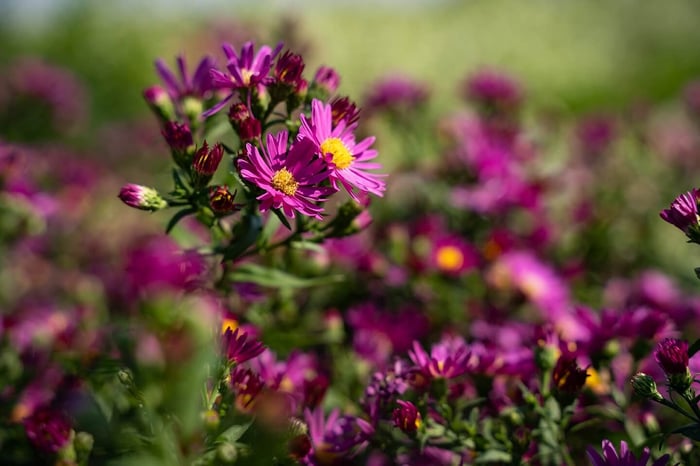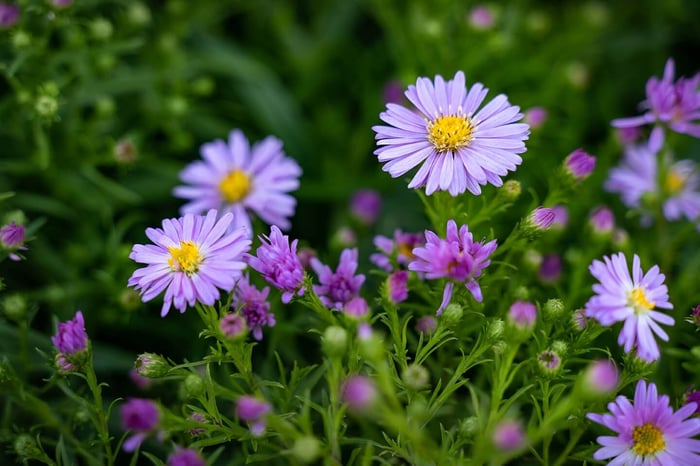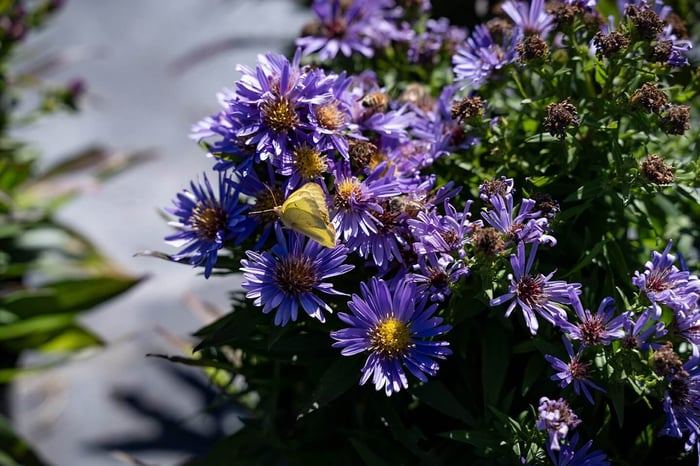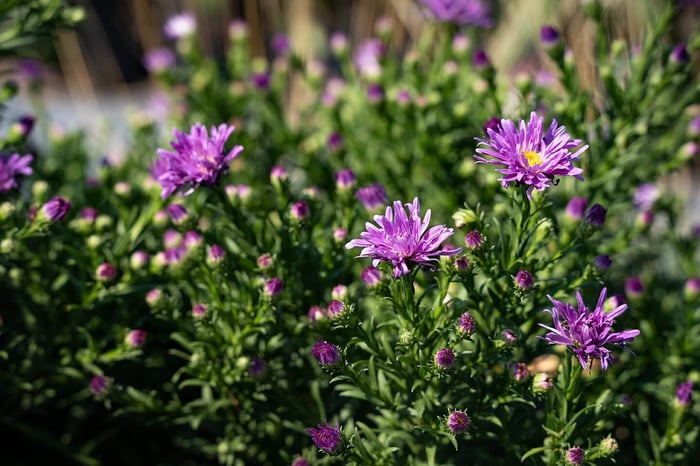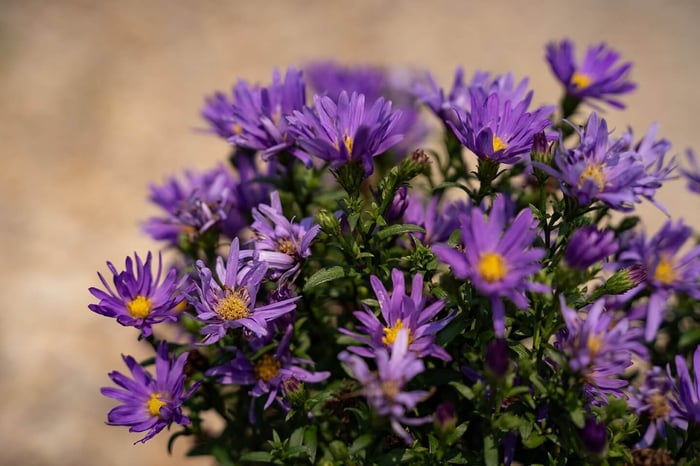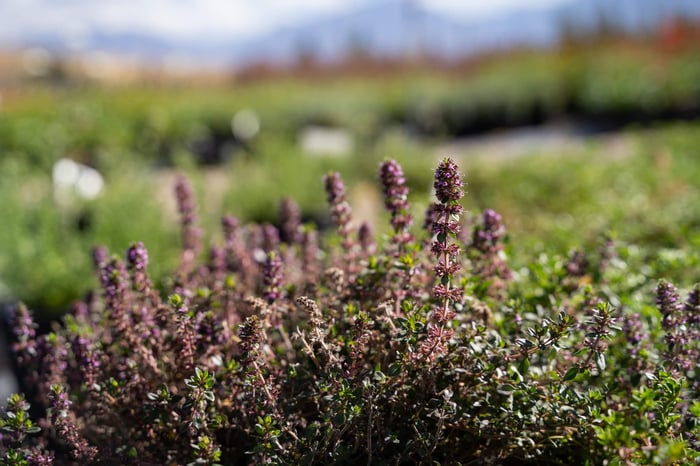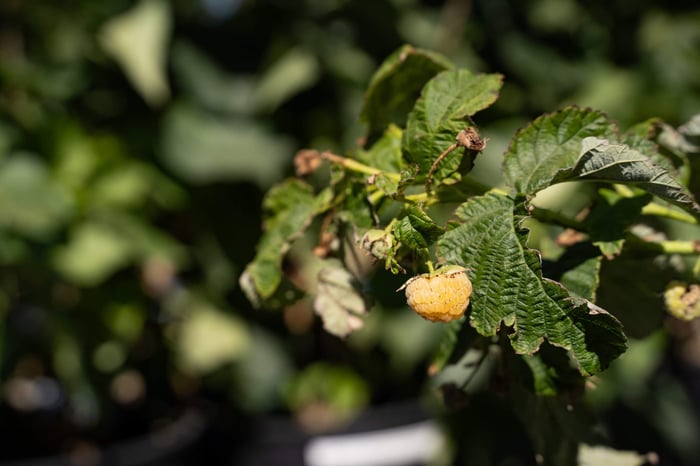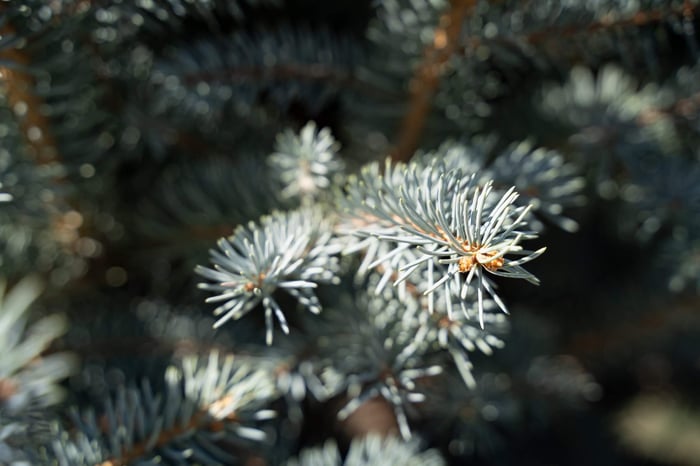As the high summer palette begins to fade to greige throughout the Intermountain West, Fall Asters, such as Aster novi-belgii Island™ 'Bahamas', offer the late-season zing your garden needs. Think of these fall asters as jewel-toned punctuation marks at the end of the growing season. Asters offer sprays of daisy-like blooms that read beautifully against architectural evergreens, gravelly rock gardens, or in softer mixed perennial borders. In our region, they’re a great way to extend color into September and October, bridge the gap between bright summer perennial beds and cool, winter structural garden plants, and provide essential nectar for late-season pollinators.
Creative ways to use Fall Aster
Mixed border anchor: Plant fall asters in groups near the front-to-mid border where the pinks, lavenders, and blues of fall asters, such as Island™ 'Bahamas' catch the eye, while taller fall-performers die back.
Evergreen backdrop: Use aster in front of Upright Junipers to give a dramatic summer-to-fall contrast of texture and color.
Pollinator pockets: Near late-blooming salvias and native penstemons to support migrating bees and butterflies.
Mass planting or drift: A swath of asters along a pathway softens rock edges and reads like a late-season meadow.
Container focal point: Combine with grasses and evergreen accents for a terrace that lasts into the first frost.
What Fall Aster brings to Intermountain gardens
Fall asters are a reliable late-season performer with medium-to-tall growth and cloud-like clusters of blooms. They tolerate a range of sun conditions and ask only for moderate water—ideal for our region where water conservation matters. Its bloom time and form make it valuable for late season visual interest and for supporting pollinators before the cold weather arrives.
Practical growing information for our region
Soils: Our soils range from alkaline clay in the valleys to rocky, sandy mixes at elevation. Improve heavy clay with generous organic matter and grit to improve drainage; in rocky soils add peat-free compost or aged bark to help with moisture retention. Asters tolerate alkaline pH but may show nutrient limitations. An iron chelate foliar feed can help if you see yellowing between veins.
Sun: Island series does best in full sun to part shade. In low-elevation valleys where summer afternoon heat is extreme, give it some afternoon shade; at higher elevations full sun is ideal.
Water: Moderate. Establish your asters with deep watering weekly during the first season, then taper to every 10–14 days depending on heat and wind. Use drip or soaker lines and mulch to conserve moisture and avoid overhead watering, which can encourage disease.
Wind & winter: Strong winds and freeze-thaw cycles can be hard on tall stems. Plant in semi-sheltered spots or use sturdy supports. A late fall mulch over roots (applied after the ground freezes) helps reduce root heaving in high-elevation beds.
Planting & maintenance: Divide clumps every 3–4 years in spring to maintain vigor. A mid-summer shearing (late June) encourages a bushier growth habit and more blooms. Deadhead to prolong their bloom season, and consider leaving some stems through winter for bird seed and stem protection, cutting back in early spring.
Pests & diseases: Low humidity helps reduce powdery mildew, but poor air circulation and overhead watering can cause issues. Provide space between plants, mulch, and proper irrigation. Watch for slugs at lower elevations and treat them organically, or with slug and snail bait, if needed.
Preparing Fall Aster for winter
As first frosts approach (typically September–October across much of the Intermountain West), follow these region-specific steps:
Stop fertilizing by late summer to harden the plants off.
Cut back the stems only if disease is present; otherwise leave seedheads for birds and as frost protection.
Apply a 2–3 inch mulch of shredded bark or compost over the rootzone after the ground begins to freeze to reduce winter root heaving, especially at higher elevations.
Move containers to protected spots or insulate with bubble wrap and mulch if you expect severe freezes.
Design tips for fall impact
Group asters in odd-numbered clusters for a more natural look.
Contrast the fine texture of aster flowers with coarse-leaved perennials or evergreen forms for visual punch.
Use low stone walls or gravel paths to frame swaths of aster — the bloom color reads especially well against rock.
Final notes from your Progressive Plants nursery pros
Fall Asters are versatile, late-season performers that adapt well across the diverse soils and climates of the Intermountain West. They’re especially happy when you place them well and care for them with your specific microclimates in mind. Improve drainage in heavy soils, give a little afternoon shade in hot valleys, mulch to conserve moisture, and pair with drought-tolerant structure plants like Penstemon strictus, Blue Oat Grass, and Juniperus scopulorum 'Grey Gleam' for multi-season appeal.
Ready to add dependable autumn color to your garden? Visit Progressive Plants today. We're open year-round and love to answer your gardening questions. Visit us online at Progressiveplants.com, or rent a golf cart for FREE and take a self-guided tour.

